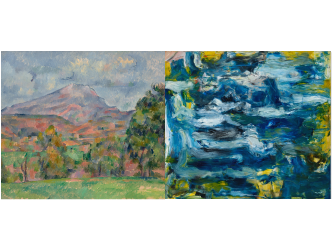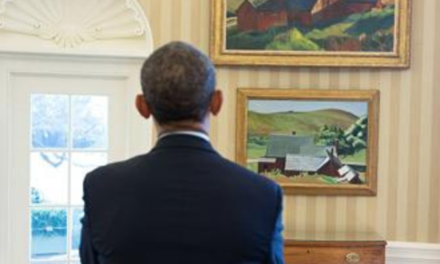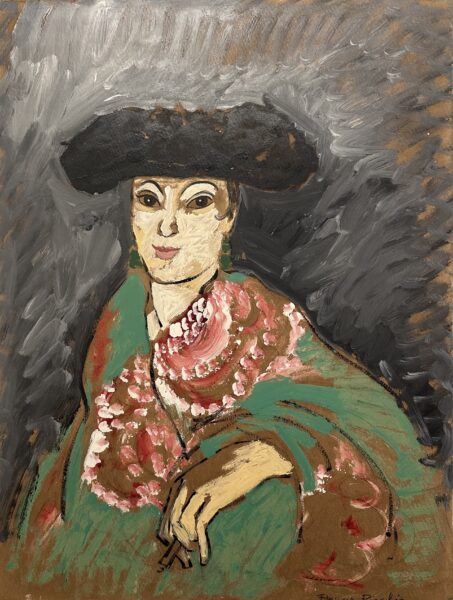
Berlin Gallery Weekend
Although Germany is a particularly important country in the field of contemporary art, thanks firstly to its artists but also to its collectors and dealers, it doesn’t have an influential art fair on an international scale. However an annual event has been taking place in Berlin for the past 20 years which has since set a precedent elsewhere: the Gallery Weekend. 55 galleries around the German capital come together to create a huge visiting circuit which attracts the entire world of museum curators and contemporary art fans.
Figurative paintings

Needless to say, the programme is prepared a long time in advance. This year from 25 to 28 April we observed, in a general sense among the gallery exhibitions, a resurgence in painting offerings, more specifically figurative paintings. For a long time, abstraction and purely conceptual art installations have come out on top.
Michael Werner
The veteran dealer currently based in Berlin among other places, Michael Werner, has always resisted this wave by more often presenting paintings since the 1960s. In 2012 he also donated 127 works to the Musée d’art moderne de la ville de Paris. The collection offered is a good reflection of his centres of interest.
For the Gallery Weekend he has opened a major exhibition composed of 24 works by a modern artist who’s fundamentally influenced the contemporary period: Francis Picabia (1873-1953).
Francis Picabia

“He’s a painter who continued the tradition of painting while modernism tried to kill it. I bought my first Picabia in the late 1970s. The artist had no illusions about the world and he painted that. His work endlessly plays with ambiguity and I find that interesting. My favourite painting in the exhibition was painted around 1937 and is called ‘Toréador’. Despite the title it depicts a woman. I think Picabia lacked confidence in himself but he was very adventurous.”
Deliberately bad paintings

In the exhibition the works are on sale for between 120,000 euros for the “pocket paintings” in very small formats and up to 5 million for the ones from his so-called “Monster” period, when he depicted figures split in two, as though electrocuted or struck by lightning. The most disconcerting and at the same time captivating thing about this artist is that he produced a kind of deliberately bad style of painting, using brownish colours and thick lines, which we also now observe among current artists.
Picabia retrospective
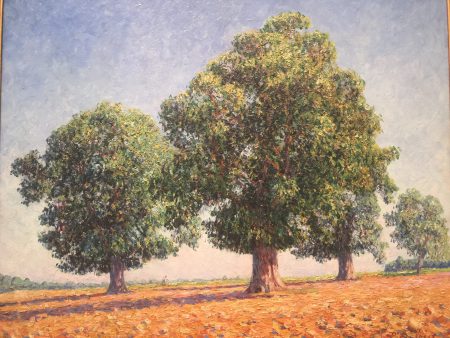
The major 2016 Picabia retrospective at the Kunsthaus in Munich and Moma in New York emphasized the frequent changes to the painter’s style (See the report here). Around a dozen distinct periods have been identified across his long career. “Not all were met with the same success but they are all the subject of demand,” observes Olivier Camu, surrealism specialist at Christie’s. The artist first became known for an impressionist flair that may seem less exciting today. In 1897 he discovered Sisley, a revelation, then in 1898 Pissarro, and his first personal exhibition held at a gallery in 1905 was a big success. According to Artprice the landscapes from this period, which are relatively boring and conventional, have sold in recent years for around 50,000 euros.
Inventor of the abstraction?

In 1908 he met Gabrielle Buffet, a true Parisian intellectual, who would become his wife. Picabia then began an intense phase of pictorial research. To this end his personal fortune allowed him to let loose. Specialists fight over whether Picabia was (or wasn’t) one of the inventors of abstraction in 1909. His meeting in 1911 with Marcel Duchamp was decisive in his emancipation from not only academicism but also avant-garde “good taste”.
David Hickey
Michael Werner’s exhibition catalogue takes a text from the late American art critic Dave Hickey titled: “Francis Picabia: His Legendary Illegitimacy” in which he explains: “more engaged with making works of art than with constructing an oeuvre or articulating an ideology, Picabia wore out styles like a baby wears out shoes. (…) His works are a hiding place where contemporary artists take refuge and find sustenance.”
Transparencies
The record price for a work by the artist – 9.10 million euros – was obtained in 2022 for what is known as a “Transparency” from 1929. In these paintings, often on cardboard, he juxtaposes different images that reflect a mix of tangled ideas. Figures, landscapes, animals and mythological scenes merge together as though in a dream.
Léonce Rosenberg
Right now the Picasso Museum is also dedicating an entire room to Picabia’s transparencies which decorated the apartment of his dealer at the time, Léonce Rosenberg (see the report on the subject). Picabia’s transparencies are potentially his works that are most driven by the surrealist spirit. France still holds more works of this kind in its private collections and on 14 March 2024 in Toulouse a transparency from 1928 was auctioned for 525,000 euros.
Head of a butterfly

Michael Werner is presenting “Briseis” for 1.5 million euros, another work from the same series from the late 1920s. It depicts a kneeling woman whose head is at the same time a skull and a butterfly. A hand is placed on her body while another woman, in the form of an apparition, watches her. In 2019 Sotheby’s sold it in New York for 638,000 euros.
Alain Tarica
“Picabia’s market value has progressively been reassessed over the past ten years,” observes Sotheby’s consultant Cyrille Cohen. But appearances can be deceiving and according to the famous dealer who is a specialist on this subject, Alain Tarica – he is known for having created, among other things, the art collection of Pierre Bergé and Yves Saint Laurent – “the most sought-after periods are Picabia’s abstract and Dada periods, but these are never found on the market.” From this era there is the Udnie painting dated from 1913 which features a dancer in motion deconstructed into multiple figures, which sold in 1990 in Paris for the colossal sum at the time of the equivalent of 3.6 million euros.
Bored too easily
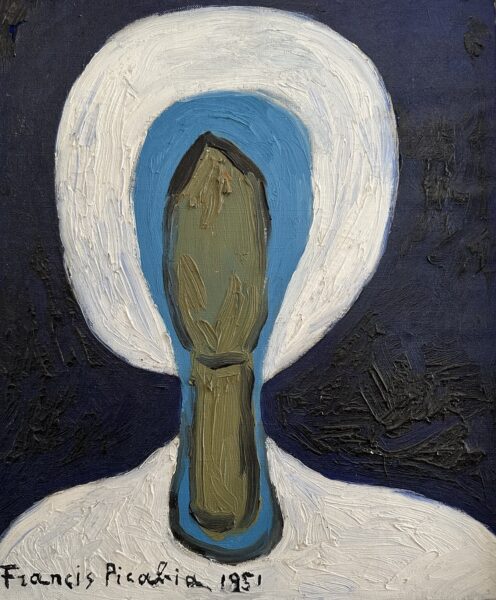
After the transparencies Picabia, who got bored too easily to stay in one specific style, developed an extensive iconography dedicated to images from magazines. Celebrities, Parisian women, nude, constituted the painter’s new repertoire, including during the war. In March 2022 a painting from the 1940s of a naked woman seen from behind, who could have been Greta Garbo, was sold for the highest price in this genre: 3.3 million euros. This side of Picabia is also the most represented at the Michael Werner exhibition.
China does not care yet

Unless the crisis starts to make its impact felt on the current art market, Francis Picabia’s value will also benefit from a potential for progression. As Olivier Camu notes, “while there is substantial demand from Europe and the United States, China is still less present in this market. Take Magritte, on the other hand. Today he is collected all over the world. Everyone understands him.”
Magritte
Result: against all odds on 7 March 2024 a late painting by the surrealist Belgian painter depicting a very commercial subject – a man wearing a bowler hat with a baguette and a wineglass on his back – sold for 39.3 million euros (See here and here reports speaking about Magritte’s market). Francis Picabia is far more complex and less commercial in his paintings. Over 70 years after his death, this still affects his market value.

Until 22 June. www.michaelwerner.de
Support independent news on art.
Your contribution : Make a monthly commitment to support JB Reports or a one off contribution as and when you feel like it. Choose the option that suits you best.
Need to cancel a recurring donation? Please go here.
The donation is considered to be a subscription for a fee set by the donor and for a duration also set by the donor.

